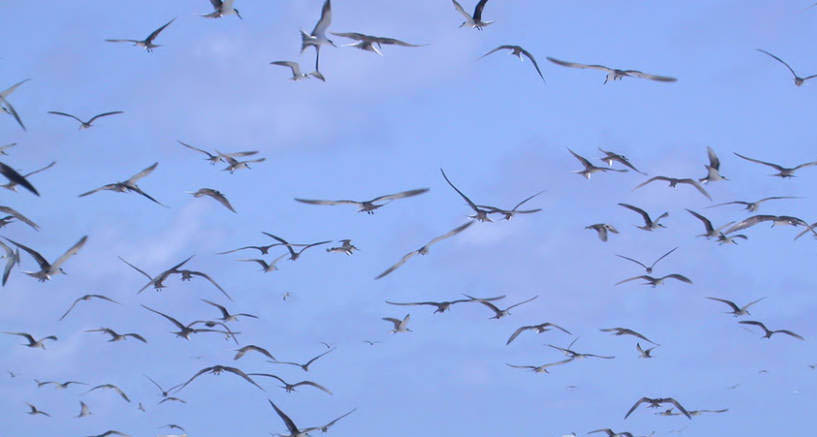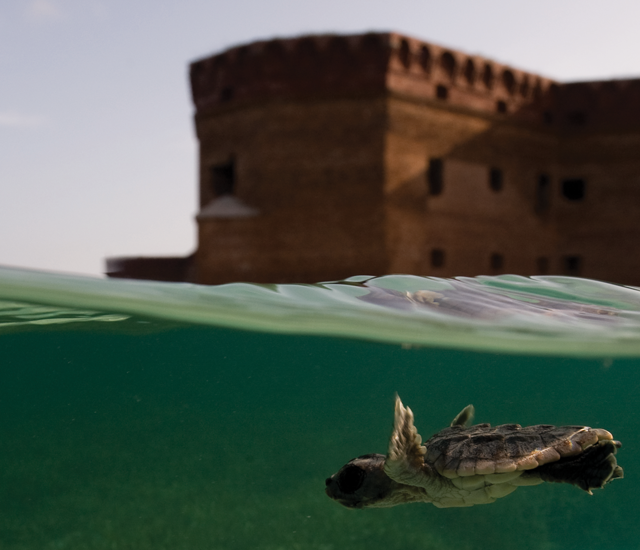The Keys Keep Changing
Scroll to learn moreStorms, waves, and ocean currents constantly move and shape the islands of Dry Tortugas. It is naturally a dynamic place. See how Garden Key, Bush Key, and Long Key (shown from left to right in the photo slider below) have changed in ten years.
Re-Keying Dry Tortugas
"Most of these islands are just above sea level."Oron L. Bass, Jr.
Wildlife Biologist Emeritus
Dry Tortugas National Park
Now Add Sea Level Rise
As the climate warms and sea level rises, many sandy beaches and islands are getting smaller—and could even disappear. Yet these keys are important habitat for nesting seabirds and sea turtles.
Sooty Terns
About 80,000 sooty terns nest on Bush Key. It’s the only nesting colony of sooty terns in North America . Bush Key is only about two feet above sea level, and rising seas coupled with wave action are eroding the island.

Seabirds at Risk
Seabirds can’t nest at sea. They nest on beaches. But sea level rise is impacting the Dry Tortugas and reducing the nesting grounds of these seabirds. Swipe to see some of the seabirds that are at risk. (All photos by Judd Patterson)
Tortugas Means Turtles
The Spaniards originally named these islands for the many sea turtles they found there. Now hundreds of years later, sea turtles are threatened or endangered.

Sea turtles that hatch here return to these same beaches to nest as adults. Rising seas erode nesting beaches—and reduce the ability of sea turtles to reproduce. What would the Dry Tortugas be without sea turtles?







